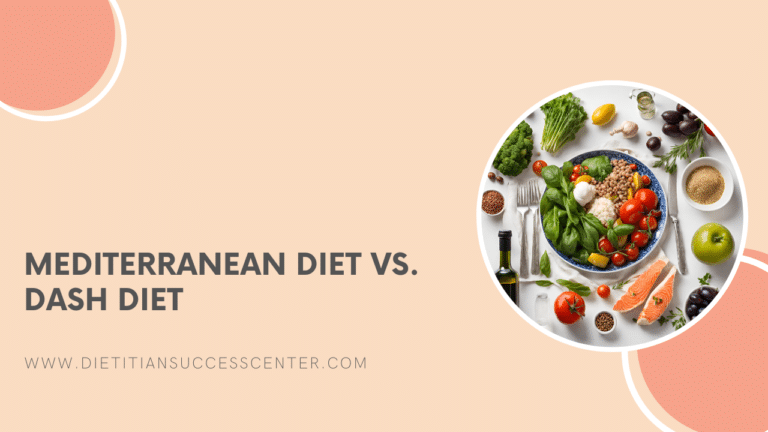
Written by Olivia Farrow, RD, MHSc
Reviewed by Krista Kolodziejzyk, RD, MPH, MBA
Dysphagia is a swallowing dysfunction that causes difficulty with the passage of foods and fluids from the mouth to the stomach (1,2). If dysphagia is left unmanaged it can lead to choking or other negative health outcomes & risks including dehydration, malnutrition, depression, aspiration (inhalation of food, fluid, and saliva), and respiratory infections (1,2,3).
Dysphagia can significantly impact your clients’ diets. Making careful food choices with the help of a Registered Dietitian can help to ensure both safety and optimal nutrition.
To learn more about dysphagia nutrition therapy and to build your confidence in working with clients with dysphagia. visit DSC’s Dysphagia Resources. Your DSC membership includes a thorough evidence summary, practice-based video course, and handouts you can use to simplify and communicate dysphagia nutrition topics with your clients, their caregivers and your team members.
Nutrition Therapy for Dysphagia
Recognition of the signs of dysphagia, diet alterations to meet nutrition needs, consideration of dietary choices, and ongoing evaluation of diet and nutritional quality are all components of nutritional therapy for dysphagia (1). Modified textures of food and fluids are usually required for dysphagia. Decisions regarding texture should take into account the nutritional status of the individual client, their care preferences, and whether texture modification will significantly impact their quality of life and intake.
Dysphagia Diet Levels
Modified textures of foods and fluids are usually broken down into progressive levels. The most common texture modification program worldwide is the International Dysphagia Diet Standardisation Initiative or IDDSI, now considered the gold standard for dysphagia diet levels, which classifies food and fluids into a continuum of levels with numbers, text labels, detailed definitions and color coding to ensure standardization and ease of use (4).
IDDSI Diet Levels Include:
IDDSI Diet Levels of Food Texture:
Level 3: Liquidised
Level 4: Pureed
Level 5: Minced and Moist
Level 6: Soft & Bite-sized
Level 7: Regular & Easy to Chew
IDDSI Diet Levels of Fluid Texture:
Level 0: Thin
Level 1: Slightly thick
Level 2: Mildly thick
Level 3: Moderately thick
Level 4: Extremely thick
Not all facilities have moved to the IDDSI framework for modified textures of foods and fluids. A commonly used texture modification tool before the implementation of IDDSI was the National Dysphagia Diet (NDD) (1). The NDD classifies food textures into three levels (dysphagia advanced/mechanically soft, mechanically altered/ground, and pureed) and fluids into 4 levels (thin, nectar thick, honey thick, pudding thick).
A more thorough exploration of the dysphagia diet levels including the IDDSI diet levels and specific food examples is available in DSC’s Dysphagia Video Course.
Foods To Avoid for Dysphagia
The dysphagia diet level will greatly affect the foods to avoid for dysphagia and the foods to choose.
However, there are some foods to avoid at many dysphagia diet levels, including:
-
- Hard, Tough, and Crunchy Foods: Foods like raw vegetables, popcorn, whole nuts, tough cuts of meat, and hard candies can pose a choking hazard and are challenging to chew and swallow.
-
- Sticky Foods: Peanut butter and caramel can stick to the mouth and be difficult to maneuver with the tongue to swallow. Rice can also become sticky or gluey when not mixed well with a sauce. Chewy granola bars are also often too sticky to be safely chewed and swallowed with dysphagia.
-
- Fibrous, Stringy Foods: Some fruits and vegetables can be tough to chew and swallow including those that are stringy or have fibrous skins (e.g. celery, pineapple, tomatoes, peas pods, cabbage, tomato, raw lettuce).
-
- Foods with Mixed Consistencies: Mixed consistency foods combine a solid and a liquid texture, either separate in a bowl (e.g. hard cereal in milk, soup with liquid broth and solid chunk) or separate once put in the mouth (e.g. watermelon, oranges) (5). Navigating both textures in the same mouthful can make swallowing difficult. Identifying your client’s diet texture prescription for solids and for liquids can help with navigating whether mixed consistencies need to be avoided and how to modify them for safety.
-
- Crumbly Foods: Dry foods like crackers, dry bread, pie crusts and cakes can crumble easily in the mouth making them difficult to chew, maneuver with the tongue, and swallow safely.
-
- Hard Pieces of Food: Some foods that turn into tiny hard pieces once chewed (e.g. nuts, seeds, coconut) may be too difficult to maneuver in the mouth.
DSC’s client handout “Foods to Choose and Avoid for a Minced Diet” provides a visual explanation of foods to explore for a minced diet specifically.
Nutritious Foods to Choose for Dysphagia
Dysphagia doesn’t have to translate into a restrictive diet. In some cases, texture modification can result in food refusals and lowered nutritional intake (2). There are many ways to modify nutrient-dense foods to be safe and enjoyable for clients with dysphagia. Some nutrition superstar foods to consider include:
-
- Soft cooked vegetables that have been cut or pureed to the necessary dysphagia diet level texture. Removing pulp, seeds, and skins may be necessary.
-
- Soft fruit or fruit sauce prepared to the correct consistency for the dysphagia diet level with no pulp.
-
- Moist, tender cooked meats cut or pureed as necessary based on the required dysphagia diet level, served with gravy or sauce of the appropriate thickness for moisture.
-
- Whole grain cereals prepared with milk to a well moistened appropriate textured, such as cream of wheat.
-
- Eggs prepared to the appropriate texture and consistency.
-
- Greek yogurt served at the appropriate consistency.
-
- Ground flaxseed or wheat bran stirred into other appropriately textured foods for a fiber boost.
Conclusion
Navigating dysphagia involves understanding which dysphagia foods to avoid and selecting alternatives that ensure both safety and adequate nutrition and acceptance and quality of life for clients. By opting for soft, moist, and easily swallowable foods, your clients with dysphagia can maintain a balanced and nourishing diet while managing dysphagia.
Always consult with the individual client directly or their secondary decision maker to ensure they are aware of and comfortable with their personalized dietary requirements and to create a personalized diet plan tailored to their specific needs, ensuring an enjoyable and safe eating experience.
Looking for more dysphagia resources for you and your clients? Check out DSC’s Dysphagia Toolkit.
Disclaimer: the information provided in all written materials is for educational purposes only and is not to be used as medical advice or to diagnose or treat a medical disease. It is strictly for informational purposes and is general in nature. Dietitian Success Center Inc. is not responsible and cannot be held liable for any actions or inactions taken related to the information provided. Consult with your local medical provider before implementing any dietary changes. It is hereby understood that the information provided does not replace medical advice provided by your healthcare provider.
References
- Raymond, J., Morrow, K. 2021. “Medical Nutrition Therapy for Neurologic Disorders”. In Krause and Mahan’s Food & The Nutrition Care Process: 15th Edition. Pages 852-857. Elsevier, Inc.
- Dietetics in Health Care Communities Dietetic Practice Group; Kathleen C. Niedert, Kathleen., Carlson, Marla. “Nutrition Care of the Older Adult: A Handbook for Nutrition Throughout the Continuum of Care”, 3rd Ed. (2016). Pages 147-154. ISBN: 978-0-88091-480-2
- Poorjavad M, Jalaie S. Systemic review on highly qualified screening tests for swallowing disorders following stroke: Validity and reliability issues. J Res Med Sci. 2014 Aug;19(8):776-85. PMID: 25422665; PMCID: PMC4235100.
- Cichero, Julie A Y et al. “Development of International Terminology and Definitions for Texture-Modified Foods and Thickened Fluids Used in Dysphagia Management: The IDDSI Framework.” Dysphagia vol. 32,2 (2017): 293-314. doi:10.1007/s00455-016-9758-y
- The International Dysphagia Diet Standardisation Initiative (IDDSI). “Mixed Dual Consistencies”. (2020). Available from https://www.iddsi.org/News/Special-Features/Mixed-Dual-Consistencies








